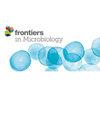Rosa rugosa Thunb.和 Coptidis Rhizoma 提取物对糠秕马拉色菌靶向细胞膜的体外和体内协同抑制作用
IF 4
2区 生物学
Q2 MICROBIOLOGY
引用次数: 0
摘要
背景糠秕马拉色菌(M. furfur)是一种流行的皮肤癣菌,严重影响患者的生活质量。本研究旨在评估蔷薇(Rosa rugosa Thunb.,MG)和黄连(Coptidis Rhizoma,HL)的联合提取物在体外和体内对糠秕孢子菌的协同抗真菌作用。采用棋盘格法和时间杀伤曲线评估了美联提取物(ML)的抗真菌活性。使用扫描电子显微镜(SEM)和透射电子显微镜(TEM)观察了真菌的微观结构变化。通过碘化丙啶染色、蛋白质浓度测定和麦角固醇定量,研究了提取物对真菌细胞膜的影响。此外,还进行了转录组分析,以阐明萃取物作用的分子机制。此外,还在糠秕孢子菌诱导的脂溢性皮炎小鼠模型中评估了 ML 的协同抗真菌作用。结果研究表明,联合应用 MG 和 HL 能显著影响糠秕孢子菌细胞膜的完整性,并可能调节其形成过程。在糠秕孢子菌诱导的脂溢性皮炎模型中,ML表现出协同抗真菌作用,有效缓解了皮肤炎症。这些发现为了解 ML 的抗真菌机制及其在皮肤病治疗中的潜在应用提供了重要的理论依据。本文章由计算机程序翻译,如有差异,请以英文原文为准。
In vitro and in vivo synergistic inhibition of Malassezia furfur targeting cell membranes by Rosa rugosa Thunb. and Coptidis Rhizoma extracts
BackgroundMalassezia furfur (M. furfur) is a prevalent dermatophyte that significantly impairs patients’ quality of life. This study aimed to evaluate the synergistic antifungal effects of combined extracts from Rosa rugosa Thunb . (MG) and Coptidis Rhizoma (HL) against M. furfur , both in vitro and in vivo.MethodsHigh-performance liquid chromatography (HPLC) was used to identify the major active compounds present in MG and HL. The antifungal activity of the combined Meilian extract (ML) was assessed using the checkerboard method and time-kill curves. Microstructural alterations in the fungi were observed using scanning electron microscopy (SEM) and transmission electron microscopy (TEM). The impact of the extracts on the fungal cell membrane was investigated through propidium iodide staining, protein concentration assays, and ergosterol quantification. Transcriptomic analysis was conducted to elucidate the molecular mechanisms underlying the effects of the extracts. Furthermore, the synergistic antifungal effects of ML were evaluated in a mouse model of seborrheic dermatitis induced by M. furfur .ResultsThe study demonstrated that the combined application of MG and HL significantly affected the integrity of the M. furfur cell membrane and potentially modulated its formation processes. In the M. furfur -induced seborrheic dermatitis model, ML exhibited synergistic antifungal effects and effectively alleviated skin inflammation. These findings provide an important theoretical basis for understanding the antifungal mechanisms of ML and its potential application in dermatological therapy.
求助全文
通过发布文献求助,成功后即可免费获取论文全文。
去求助
来源期刊

Frontiers in Microbiology
MICROBIOLOGY-
CiteScore
7.70
自引率
9.60%
发文量
4837
审稿时长
14 weeks
期刊介绍:
Frontiers in Microbiology is a leading journal in its field, publishing rigorously peer-reviewed research across the entire spectrum of microbiology. Field Chief Editor Martin G. Klotz at Washington State University is supported by an outstanding Editorial Board of international researchers. This multidisciplinary open-access journal is at the forefront of disseminating and communicating scientific knowledge and impactful discoveries to researchers, academics, clinicians and the public worldwide.
 求助内容:
求助内容: 应助结果提醒方式:
应助结果提醒方式:


